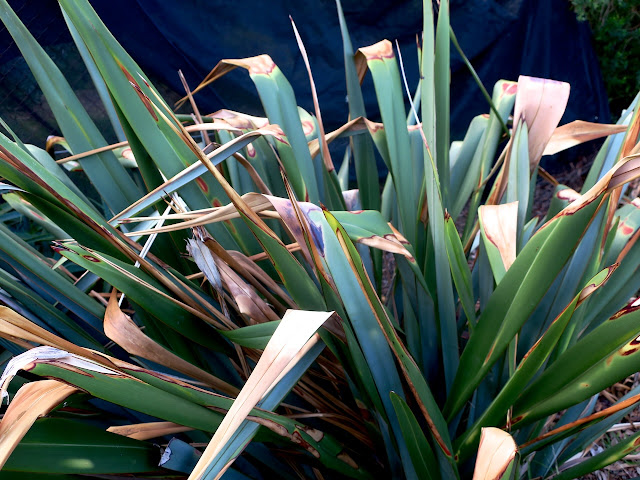The red of the Boston Ivy Parthenocissus tricuspidata, on the old Director's house, now called Gardens House, was quite intense. It is probably more eye-catching because in front of the old house is the Perennial Border, which is looking a bit dull now as most of the late summer flowers have finished blooming.
I also noticed that the ivy is climbing up a large tree to the west of the old building. This photo shows the bright red vine among the green leaves of the tree.
In a nearby Norfolk Island Pine some Sulphur Crested Cockatoos were chewing away at the bark of the highest branches.
Nearby there is the beginning of autumn colouring on this Pin Oak Quercus palustris, on the Oak Lawn; an early heralding of the cooler weather to come.
At my Melbourne class I had set a revision exercise for the advanced students, of making a slanting ikebana in the nageire style (that is, using a tall straight-sided vase).
A few weeks ago I made the ikebana below for our friends Heather and John who had invited us to dinner.
This photo shows the damaged leaves of the Flax that I mentioned in a posting recently. It is the result of three consecutive days in the high thirties while we were away, and the general dryness of our soil. I am trusting that the plant will recover over the winter when we will have more regular rain.
Once again I have used some of the heat-damaged leaves of the Flax in my ikebana. The leaves have developed areas of rust-brown surrounding straw-yellow patches on leaves that are mostly green. Some roadside-collected Red Bottlebrush Melaleuca citrina provides a harmonising colour focus. The use of such materials as these leaves is a reminder of one of the Wabi-sabi ideas. The recognition that beauty maybe found in the imperfect and transient.
The ceramic suiban comes from Seto city.
Greetings from Christopher
28th April 2024









No comments:
Post a Comment